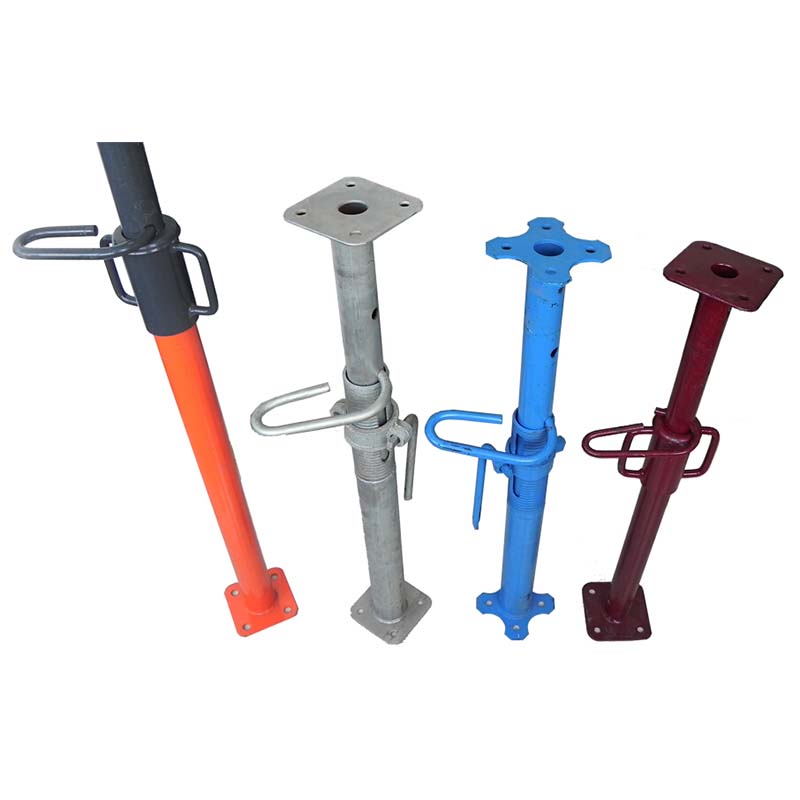Aug . 20, 2024 18:04 Back to list
Formwork Solutions for Manufacturers of Steel Bridges and Structures
The Role of Formwork in Steel Bridge Manufacturing
In the realm of civil engineering and construction, formwork plays a crucial role, particularly in the manufacture of steel bridges. This essential component lays the groundwork for safe and effective construction practices, ensuring that steel structures meet the required specifications and standards.
Formwork refers to the molds or structures used to hold wet concrete in place until it hardens, forming the intended shape. In the context of steel bridges, formwork is particularly vital when concrete composite elements are involved, such as bridge deck slabs or composite girders. The formwork not only supports the concrete but also helps in achieving high precision during the manufacturing process, thereby enhancing the overall quality of the bridge.
Types of Formwork
There are several types of formwork used in bridge construction, each with its unique advantages. Traditional timber formwork is often favored for its flexibility and ease of use, allowing for intricate detailing and customization. However, it can be labor-intensive and less durable compared to modern alternatives.
On the other hand, prefabricated formwork systems made from steel or modular elements have gained popularity due to their durability and reduced construction time
. These systems can be assembled and disassembled swiftly, making them ideal for large-scale projects where time efficiency is crucial.Importance of Formwork in Reinforcing Steel Bridges
Proper formwork is essential not just for the initial shaping of concrete, but it also plays a vital role in reinforcing steel. The alignment and stability provided by the formwork ensure that the reinforcing bars (rebar) are correctly positioned to carry the loads the bridge will face in its service life. Any deviation in this placement could lead to structural weaknesses, compromising the bridge's integrity.
Moreover, the quality of formwork affects the final finish of concrete surfaces. When concrete is poured into well-constructed formwork, it results in smoother finishes that require less post-processing, leading to time and cost savings.
formwork for steel bridge manufacturer

Quality Control and Safety
In steel bridge manufacturing, adherence to quality standards is paramount. Formwork not only aids in meeting these standards but also enhances safety on the job site. Well-designed formwork systems mitigate the risk of accidents during concrete pouring, reducing the chances of structural failures during and after construction.
Furthermore, modern formwork systems often incorporate safety features that protect workers during the construction process. This includes guardrails, non-slip surfaces, and ergonomic designs that facilitate easier maneuvering.
Innovations in Formwork Technology
As technology continues to evolve, so do formwork systems. Innovations such as automated formwork and smart monitoring systems are becoming more prevalent. These advanced systems allow for real-time tracking of concrete curing and structural integrity, providing valuable data that can be used to enhance the construction process further.
Additionally, the incorporation of environmentally friendly materials in formwork designs is gaining traction. Sustainable practices within formwork not only reduce waste but also lower the overall carbon footprint of steel bridge manufacturing.
Conclusion
In summary, formwork is an indispensable aspect of steel bridge manufacturing. Its multifaceted role in shaping concrete, reinforcing structures, ensuring safety, and maintaining quality standards cannot be overstated. As the industry continues to innovate, the evolution of formwork technologies will undoubtedly play a pivotal role in the future of bridge construction, paving the way for safer, more efficient, and sustainable infrastructure.
-
High-Quality U Head Jack Scaffolding – Reliable Scaffolding Jack Head Manufacturer & Factory
NewsJul.08,2025
-
High-Quality I Beam H20 Leading Timber Beam H20 Material Factory, Exporters & Manufacturers
NewsJul.08,2025
-
High-Quality Powder Coating Steel Formwork - Durable & Corrosion Resistant Solutions
NewsJul.07,2025
-
Inclined Column Formwork Supplier – Durable & Precise Solutions for Unique Structures
NewsJul.07,2025
-
High-Quality Water Stop Solutions Trusted Water Stop Company & Suppliers
NewsJul.07,2025
-
High-Quality Formwork Material Supplier Reliable Manufacturer & Factory Solutions
NewsJul.06,2025